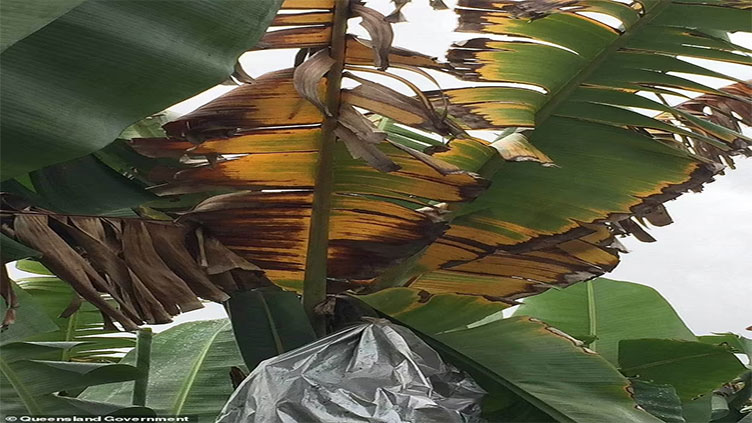Nearly half of world's bananas are on brink of extinction

WeirdNews
Scientists warn bananas could go extinct as 'catastrophic' fungal disease is about to wipe out fruit
(Web Desk) - Nearly half of the world's bananas are on the brink of extinction as a fungal disease threatens plantations across the globe.
Cavendish crops in Asia, Africa, the Middle East, Australia and Central America have already been infected by the Panama disease, a soil-born fungus.
The disease causes the plants to wilt by targeting their vascular system and reducing the amount of water they take in from the soil.
Experts recently identified early signs of the 'catastrophic' fungus in South America, where most exported Cavendish bananas are grown in our supermarkets.
Cavendish bananas account for 47 percent of global banana production and exports.
However, this type of banana was grown to replace another that was eradicated by the disease.
Gros Michel, also called Big Mike, was the main type until the 1950s.
The United Fruit Company popularized Gros Michael but introduced Cavendish in 1947 when the banana plantations began to die off.
Cavendish was immune to the strand, allowing it to dominate the market.
However, in 1997, scientists found a new strain called TR4 in Australia that could infect Cavendish, and the fungus traveled throughout the continent by 2015.
James Dale, a professor and leader of the banana biotechnology program at the Queensland University of Technology, told Insider: 'Since then, it has spread to India and China, the world's largest producers of bananas.
'It has also spread to the Middle East and Africa and very recently was found in South America.'
Panama TR4 is easily spread by people, vehicles, machinery and animals by the movement of infected banana plants, planting material, and contaminated soil and water.
The infection is apparent when leaves begin to turn yellow, which then leads to wilting and browning.
The stem of banana plants will then rot on the inside, which appears as a discoloration when cut open.


